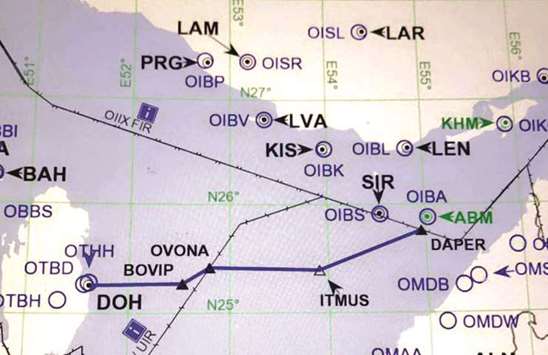But some of the airspace corridors over the Gulf were opened yesterday shortening the current flight times into the capital and Qatar Airways hub, Doha. It is not an opening of all the national airspaces currently closed off to Qatari aircraft, but it is the first easing of the aviation blockade that followed the crisis.
The easing follows a directive by the International Civil Aviation Organisation (ICAO), the United Nations body overseeing civil aviation, stating that Bahrain, Egypt and the UAE are bound to uphold the international treaties governing the so-called ‘freedom of the skies’.
Thanks to this directive, Qatar was expected to regain access to some airspace routes that were closed at the beginning of the crisis.
Yesterday a NOTAM (notice to airmen), essentially an official notice to all flight crews, appeared in the US Federal Aviation Administration’s NOTAM database, regarding a new flight information region, or FIR, route available through Bahrain airspace. In other words, it’s a “highway in the sky” now available again for Qatari aircraft.
Another NOTAM also appeared, regarding a new FIR in the airspace of the United Arab Emirates.
In brief, these NOTAMS state that a new flight information region airspace route has been made available to aircraft from Qatar, effective August 7. It is described as a ‘temporary route’ and is essentially a new airspace option for Qatar Airways aircraft departing and arriving at Doha (DOH) Hamad International Airport.
Unfortunately for Doha-bound passengers, the biggest airspace closure affecting Qatar isn’t going to go away, thanks to ICAO rules. That’s because the largest no-fly zone affecting Qatar is Saudi Arabia, which unlike the other countries involved is not a signatory to the ICAO transit agreement and can therefore keep its airspace closed to Qatar as long as it wants. Qatar Airways aircraft avoiding Saudi airspace can be affected by detours to certain destinations like Larnaca (LCA), Cyprus.
* Alex Macheras is a leading aviation analyst



